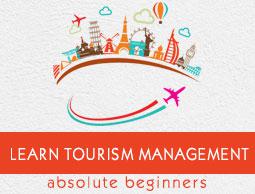Tools for Destination Management
A number of management tools can be used in Destination Management −
System of Measuring Excellence for Destinations (SMED)
The destination development starts with hiring any UNWTO affiliate organization to research and come out with the findings about the situation at the destination and its surroundings. The hired agency conducts observations, surveys, readings, and interviews of the area and generates reports of the findings. SMED also recommends the necessary developments and prospective income opportunities at the destination.
Using Scientific Research
Experts conduct scientific research at the destinations and contribute their findings which can be a great aid to develop destination by protecting the ecosystem of various places. For example, banning fishing in some marine area, banning the entry in some reserves to protect and conserve flora and fauna.
Monitoring the Destination
The UNWTO conducts annual surveys of businesses, residents, foreign tourists, and domestic tourists, about their experience and expectations at the destination. It also takes inputs from local residents and generates reports. The reports then help the local leaders identify and resolve the problems.
Public Use Plans (PUP)
The information recorded in the reports is then uses to create a Public Use Plan (PUP) for the destination. A PUP proposes how to manage the torrent of tourists effectively by considering the volume of traffic, entry fees, protection of sensitive areas, housekeeping efforts and cost of maintaining the sites, and so on.
Steps of Destination Development
The following steps are observed while developing a destination −
Develop a Vision for the Destination
A vision is an exciting picture of a destination’s desired futures. The vision is intended to motivate stakeholders to work together to achieve these futures. Vision brings all the stakeholders together and creates an integrated vision of all the individual visions of the stakeholders.
The vision works to find a common ground in which each stakeholder plans a part of their future. Tourism visions describe the style of tourism the destination would like to be recognized for such as ecotourism, culinary, cruise port, or any other, and the target market for the destination.
Here are some questions to ask during the visioning −
How do you see your destination after tourism development?
What do you want to see happen at the destination?
How much of what type of tourism development fits with your image of your destination’s future?
It is then followed by destination-wide meeting, gathering the local responses, and drafting the vision as a mean to start the work of destination development.
Set the Goals for Tourism Development
Set economic, socio-cultural, and environmental goals. Goals are realistic, measurable targets for the destination’s tourism vision. Tach goal goes hand in hand with the vision. While setting the practical goals, the following answers are found out −
How many inbound tourists does the destination want to attract?
How many jobs, for whom, at what pay scales, and for what seasons?
What is the anticipated percentage increase of income for local residents?
How many tourists are too many?
The stakeholders identify the practical aspects of goals, timelines, and the actions needed to perform to achieve each goal.
Collect Visitors’ Experience
The tourists’ experience can be divided into four phases −
Dreaming of travel − Anticipating holidays or breaks and finding out information of dreamed destination, Fix the range of destinations.
Choosing the destination − It takes place under the influence of cost, climate, first-hand information, internet, and amenities at the destination.
Visiting the destination − Experiencing the place and Forming of opinions, perception about the destination. Generating the feelings of satisfaction/dissatisfaction.
Post-tour phase − The visitors share pictures and experiences with relatives and friends, recommend to visit or not to visit the destination.
Compile a Visitor Survey
A survey of visitors is then compiled by collecting their profile data through questionnaires. The particular visitors make market segment. The visitor profiles are created by recording the following information about visitors −
Type of visitor
Demographics (age, mode of travel, group size, nationality)
Psychographics (values, benefits, desired experience, beliefs, perception about the destination)
Spending patterns (daily expenditures, types of purchases made, form of payment, duration of stay)
Establish a Destination Management System
The responsibility of creating a Destination Management System (DMS) is that of the destination managers. A DMS is a database for collecting, manipulating, and distributing the recorded information. It includes the following information −
Supply inventory and performance of hotels, tour operators, attractions, restaurants, etc.
Events, festivals, activities, shopping, cycle routes, beautiful spots.
Visitor profiles.
Resident survey results.
Social, economic, and environmental impacts.
The DMS organizes the information to facilitate all the stakeholders of tourism to make their presence felt on the Internet. It also enables the destination and tourism businesses offer dynamic tour packages. DMS help DMOs by using Content Management System (CMS) to support the presence of DMO on web and social media.
Market the Destination on the Internet
In present times, people have indisputable accessibility to information on various websites. It is very important to for a tourist destination to mark its presence on the internet. Easy to navigate, clear website with high quality photographs of the destination and simple yet exceptional content can market any tourist destination effectively.
By visiting these E-destinations, the tourists get a fair idea about what to expect and what they are going to experience.
Brand the Destination
Destination branding is nothing but describing the visitors’ experience in terms of facilities, amenities, attractions, activities, and other resources to the people to turn them into the tourists.
A strong destination brand creates an image about the destination, modifies peoples’ perception about a place, influences decision-making, and delivers a memorable experience.


